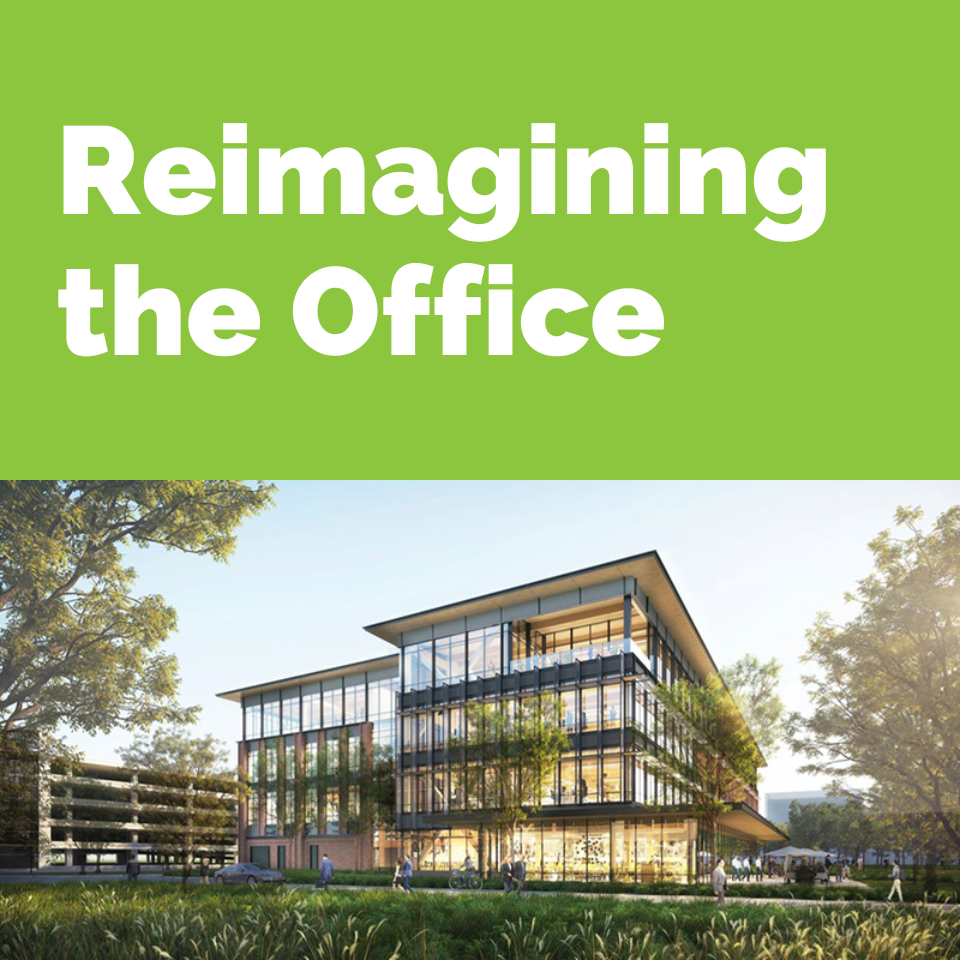Three Design Firms Reimagine the Office

Every company is looking for an edge to attract the best talent, and for many, office space is a key part of that strategy.
In a recent NAIOP webinar moderated by Taylor van Dam, COE leader, workplace innovation, Cushman & Wakefield, experts from three different design firms share their vision for the office of tomorrow; the key design elements that will have the most impact; and some of the exciting new technological possibilities ahead.
Eric Shade, PLA, LEED AP, a landscape architect with Kimley-Horn, started the discussion by talking about redefining traditional exterior space in the urban office environment, specifically by incorporating gardens.
According to Shade, gardens provide a connection to the existing urban canvas, a destination for the office tenant and the public, visual attractiveness, and contribute to sustainability. He shared three projects in Atlanta where his firm has incorporated gardens to better activate exterior office space.
Ian Zapata, an architect with 25 years of experience and a global practice leader for office repositioning at Gensler, shared five meta trends the firm is seeing impact the work sector:
- The workplace must become a compelling destination. “[The office] has to work harder than ever before to be the place of choice for people to come to work.”
- Experimentation, prototypes, and learning are the new normal. “We see this in the tech sector – companies are experimenting to see which office models fit the new hybrid workforce.”
- The new workplace ecosystem will include third spaces. “In this new age of hybrid work, especially for the younger generations, working away from the office can mean not just away from home, but at another location [that’s not the office]. We’ll see places for work that look less like a traditional office – what I call a ‘stealth workplace.’”
- The workplace will play a critical role in fostering equity and inclusion. “Increasingly in the future, buildings will be required to address ESG [environmental, social and governance] concerns. There’s a lot of money out there waiting for investment, too.”
- Investments in health and well-being will deliver value for employees. “Work will not be the primary driver in bringing people back to their business districts,” Zapata said. “People want their business district to be a lifestyle hub.”





